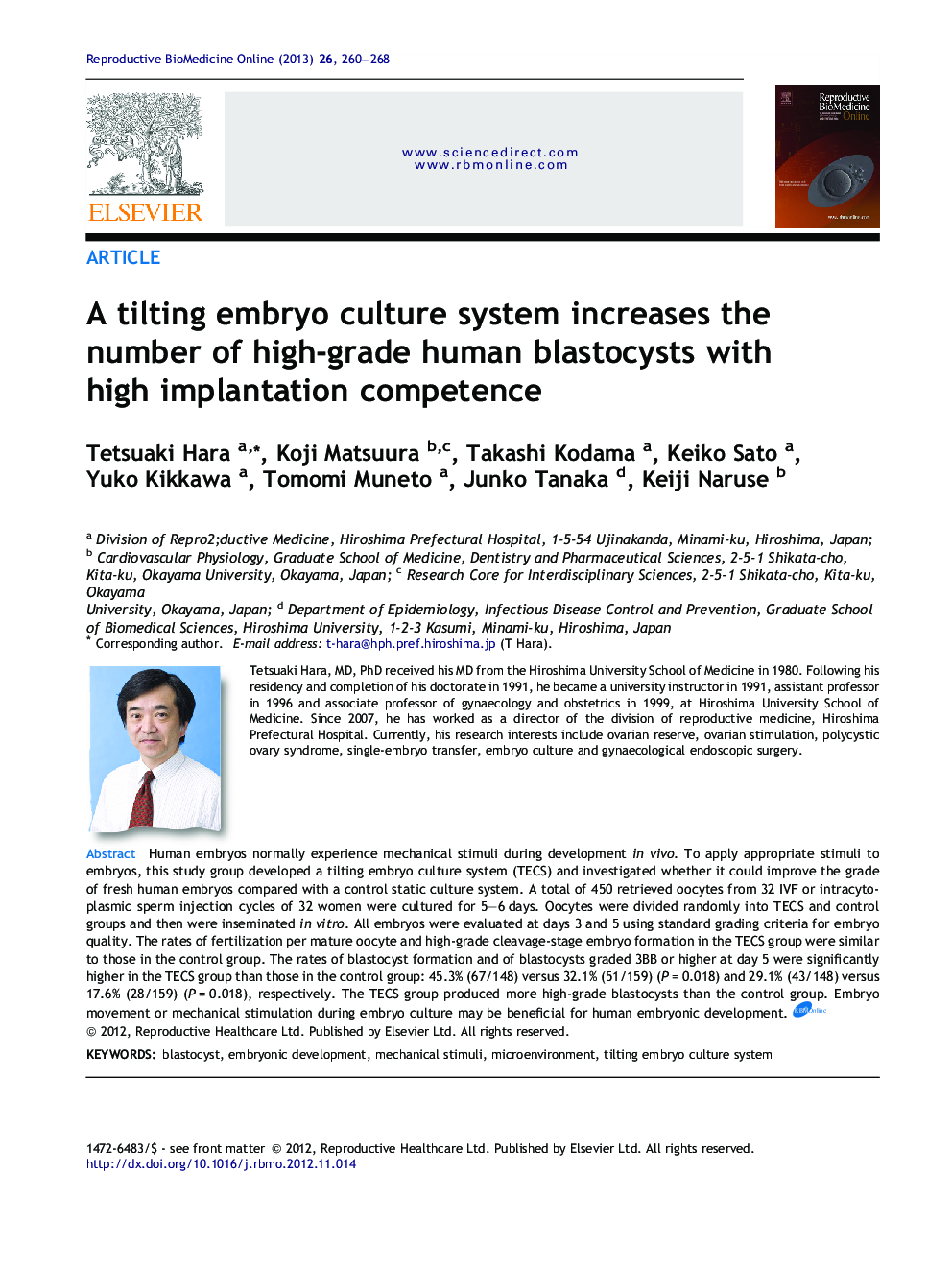| Article ID | Journal | Published Year | Pages | File Type |
|---|---|---|---|---|
| 3970665 | Reproductive BioMedicine Online | 2013 | 9 Pages |
Human embryos normally experience mechanical stimuli during development in vivo. To apply appropriate stimuli to embryos, this study group developed a tilting embryo culture system (TECS) and investigated whether it could improve the grade of fresh human embryos compared with a control static culture system. A total of 450 retrieved oocytes from 32 IVF or intracytoplasmic sperm injection cycles of 32 women were cultured for 5–6 days. Oocytes were divided randomly into TECS and control groups and then were inseminated in vitro. All embryos were evaluated at days 3 and 5 using standard grading criteria for embryo quality. The rates of fertilization per mature oocyte and high-grade cleavage-stage embryo formation in the TECS group were similar to those in the control group. The rates of blastocyst formation and of blastocysts graded 3BB or higher at day 5 were significantly higher in the TECS group than those in the control group: 45.3% (67/148) versus 32.1% (51/159) (P = 0.018) and 29.1% (43/148) versus 17.6% (28/159) (P = 0.018), respectively. The TECS group produced more high-grade blastocysts than the control group. Embryo movement or mechanical stimulation during embryo culture may be beneficial for human embryonic development.A culture system that produces high-quality blastocysts capable of implantation is critically important for IVF and embryo transfer. Human embryos normally experience mechanical stimuli during development in vivo. To apply appropriate stimuli to embryos, we developed a tilting embryo culture system (TECS) by placing a culture dish on an automatically tilting plate to move embryos back and forth along the bottom of the dish. We investigated whether the TECS could improve the grade of fresh human embryos to be transferred compared with that of a control static culture system. A total of 450 retrieved oocytes from 32 IVF or intracytoplasmic sperm injection cycles of 32 women were cultured for 5 days. The oocytes were divided randomly into TECS and control groups and inseminated in vitro. In the TECS group, the dishes were subjected to a maximum 20° tilt for 10 min in each direction at 1° per second. All embryos were evaluated at days 3 and 5 using standard embryo quality grading criteria. The rate of fertilization and high-grade cleavage-stage embryo formation in the TECS group were similar to in the control group. The rate of blastocyst formation and growth of blastocysts graded 3BB or higher were significantly higher in the TECS group than in the control group: 45.3% (67/148) versus 32.1% (51/159) and 29.1% (43/148) versus 17.6% (28/159), respectively. The TECS produced more high-grade blastocysts than the control group, which increased the number of usable blastocysts, by exposing embryos to normal levels of mechanical stimuli in vitro.
